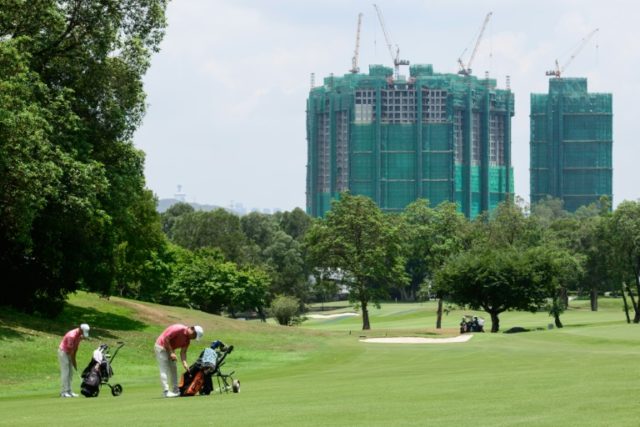Hong Kong (AFP) – A clutch of the golfing world’s A-listers are teeing off at the Hong Kong Open on Thursday, acutely aware of the astronomical value of the land beneath their feet and of the precarious position of the tournament’s historic venue.
Hong Kong’s bureaucrats, under pressure to alleviate a chronic housing shortage, and the city’s powerful developers have their eyes on Fanling, the 170-hectare (420 acres), colonial-era course that has hosted the Open since 1959.
And with the current lease due to expire in two years, the exclusive club is fearful its fairways, which have hosted many of the game’s greats, may end up covered in concrete.
The situation puts Fanling, a relic of British colonialism just inside the border with mainland China, at odds with rapid development in Hong Kong, which has some of the world’s most expensive real estate.
While many question the need for the private golf club in a city crying out for cheaper homes and more space, the prospect of losing Fanling is unpalatable for some players.
“We live and breathe golf so, for us, Hong Kong loses part of its identity by losing the golf course,” England’s Tommy Fleetwood told AFP ahead of the tournament.
“It would be very, very sad if that happened.”
At 6,700 yards (6,100 metres), the Hong Kong course is one of the shortest on the European tour. But it is big enough to find itself in the firing line in the city of seven million, where competition for space is brutal.
Some Hong Kong property developers tout ‘nano-flats’ of under 215 square feet (20 square meters). Other sports facilities like football pitches and tennis and basketball courts are squeezed in between skyscrapers.
In a city where median house prices are 19.4 times median incomes -– the worst ratio globally, according to the Annual Demographia International Housing Affordability Survey 2018 — many believe the land should be given over to public housing.
– Construction noise –
Development is already taking place next to the course, where almost-finished tower blocks loom beside some of the holes, accompanied by the din of construction.
Rory McIlroy, Justin Rose, Greg Norman and the late Peter Thomson are among those who have won at Fanling, whose short fairways, small greens and dog legs have won a legion of fans.
“You have to think your way around,” said Spain’s Sergio Garcia, a hero of this year’s Ryder Cup. “It’s going to test you, and those are the courses that we love.”
For Masters Champion Patrick Reed, “There’s no better place to start off the season.”
The Hong Kong Golf Club, which was formed in 1889 as the Royal Hong Kong Golf club — making it one of the oldest golfing societies outside of Britain and Ireland — paid a one-off premium to lease the land at Fanling.
It has been reported that it also pays a token HK$1 (13 US cents) a year on top of that, although the government has refused to confirm this.
While non-members can play, one round costs a hefty HK$1,100 (US$140). Corporate membership reportedly runs into the hundreds of millions of dollars.
A video entitled ‘Five top reasons for preserving Fanling golf course’, on the Hong Kong Golf Club’s website, points to its wildlife, history, ancient Chinese tombs and the development of young players.
But given the clamour for homes, and the money at stake, the future is unclear for the venerable club, one of Asia’s best known golf courses.
“There is a long list of top players that have played in the Hong Kong Open, whether they’ve won it or not… and when you talk about it, they’ll always mention the golf course, Fanling,” said Fleetwood.

COMMENTS
Please let us know if you're having issues with commenting.